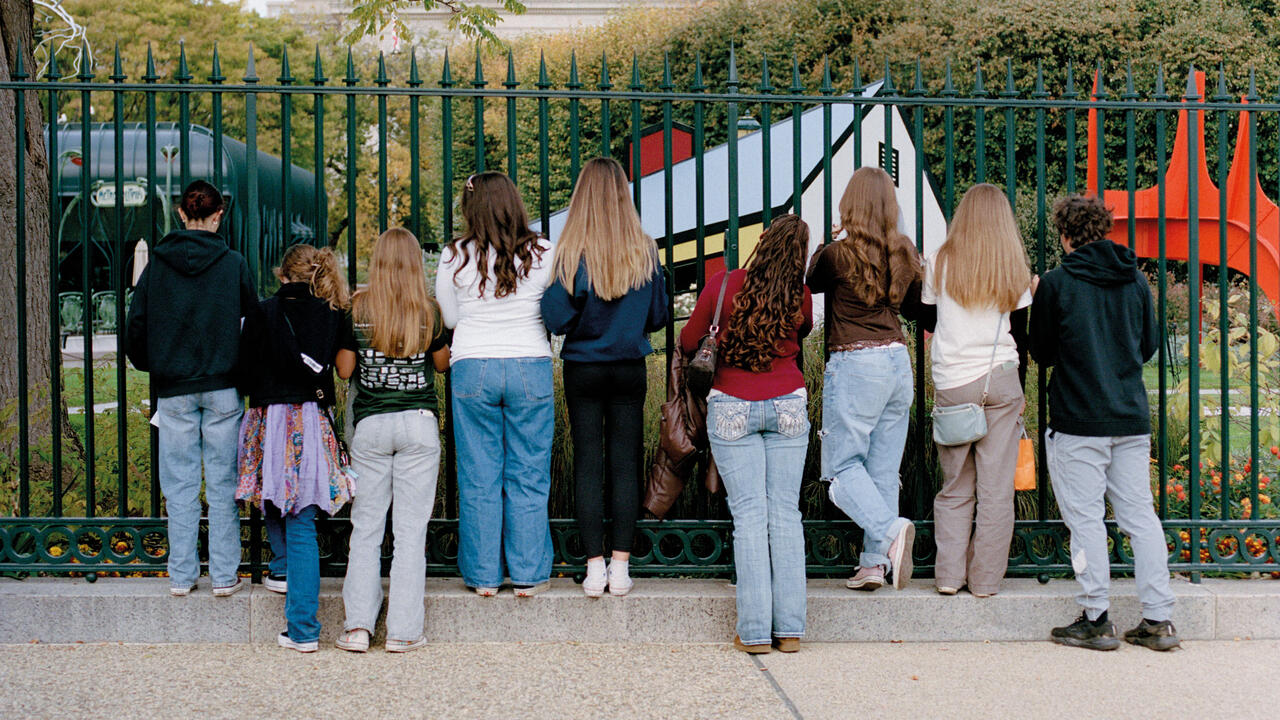Chaos & Control
How postinternet aesthetics are thriving behind the Great Firewall
How postinternet aesthetics are thriving behind the Great Firewall

As postinternet aesthetics in the West seem to be buffering, the Chinternet thrives. This cute portmanteau for the Chinese internet refers, of course, to the vast territories defended by the Great Firewall. Only half of all Chinese citizens are online (compared with 88 percent in the US) but, numbering over 700 million, this represents the single largest community of internet users in the world.
A wall, it should be remembered, does not only fend off contamination from without; it also incubates the cultures contained within. Since the late 2000s, artists like Miao Ying and Michelle Proksell have been exploring the intense creativity of the Chinternet. Prohibitive state censorship has engendered a vibrant vernacular of weird memes and punning neologisms: a distinctly national internet culture that weaponizes the propensity of the Chinese language for homophones to dazzling satirical effect.
There is little doubt that the Chinternet remains the closest thing to free speech in China, and that the Chinese are the most advanced – and, possibly, the sassiest – GIF-based communicators on the planet. As always, laws produce their own transgressions and outside observers have been keen to highlight the Chinternet’s rich interstitial potential: a subversive meme politics, irrepressible and victorious, always two steps ahead of the authorities. While the internet at large is becoming an increasingly commodified space, the Chinternet remains politically potent by virtue of its very unfreedom.
Communication and control have long been closely linked. In recent years, Beijing has poured billions of RMB into informational infrastructure and research, from policies to connect China’s largely offline rural population to its recently launched quantum satellite – an experiment in ‘unbreakable’ cryptography. At its inaugural World Internet Conference in 2014, China drafted a declaration proposing to safeguard the ‘internet sovereignty of all countries’. In his opening address, the vice-director of the State Internet Information Office (SIIO), Ren Xianliang, explained the Communist Party’s intention to administrate a ‘healthy, civilized, harmonious and orderly’ internet, brimming with ‘positive energy’. (Taking cognitive dissonance in its stride, as ever, the SIIO had copies of its manifesto slipped under delegates’ hotel-room doors at midnight – on paper.) These transparent euphemisms for a state-managed web recall the fact that the internet has never been free but is always subject to corporate, political and geographic control – an understanding that the Chinternet takes as its guide to best practice.
In Miao’s Chinternet Plus (2016), co-presented by Rhizome and the New Museum as part of its ‘First Look’ online exhibition series in June, the artist lampoons ‘Internet Plus’, the Chinese government’s strategy for the transformation of major industries through big data and artificial intelligence. For Miao, the Party’s spirit of technological gung-ho is a hollow exercise in political branding. However, unlike Silicon Valley’s political lobbies, China’s internet corporations maintain their monopolies through a collaborative rather than a coercive relationship with the government. Content on the Chinternet proliferates because, rather than in spite, of its state-backed digital ecology. As such, the prospects for the implementation of big data techniques at an unprecedented scale are formidable.
The Chinternet is lived in real time, in the palm of the hand. While Facebook belongs to millennials, almost every Chinese internet user is on WeChat – roughly, an amalgam of WhatsApp and Instagram – which is indispensable for social and professional existence. The combination of a vast user base and a handful of ubiquitous online platforms results in cultural currents that flow at a blinding pace – spreading and evolving far more rapidly than on the Western web.
The deluge of content uploaded every second to personal live-streaming apps, such as Kwai Shou and Inke, exhibits the intense popularity of online participation. Meanwhile, the phenomenon of dan mu (literally: bullet curtain – a video-streaming format that displays the comments of fellow viewers in real time across a screen) often sees popular videos entirely obscured by a flurry of user responses. As a result of this compressed temporality – instantly commented upon and immediately buried – such platforms have become anarchic and unmoderated forums that are impossible to surveil, but too quickly forgotten to sustain political momentum.
A useful metaphor for the Chinternet might be that of a collective dream, a transient illusion of communal agency from which users awaken to find themselves in the real world. In one of Miao’s Chinternet Plus images, a lurid mass of applauding ‘reaction’ GIFs corrals around a half-loaded portrait of Mao. With its extraordinary marriage of chaos and control, the Chinternet offers an alternative reality to the ostensibly ‘free’ internet we have in the West. It’s a salient demonstration that nebulous virtual networks can, and inevitably will, be subjected to infrastructural regulation. As China looks forward to an ‘interconnected world shared and governed by all’ (the central theme of the first World Internet Conference), the Chinternet offers a sobering glimpse of internets yet to come.
Lead image: Miao Ying, Chinternet Plus, 2016 (detail). Courtesy: the artist






















